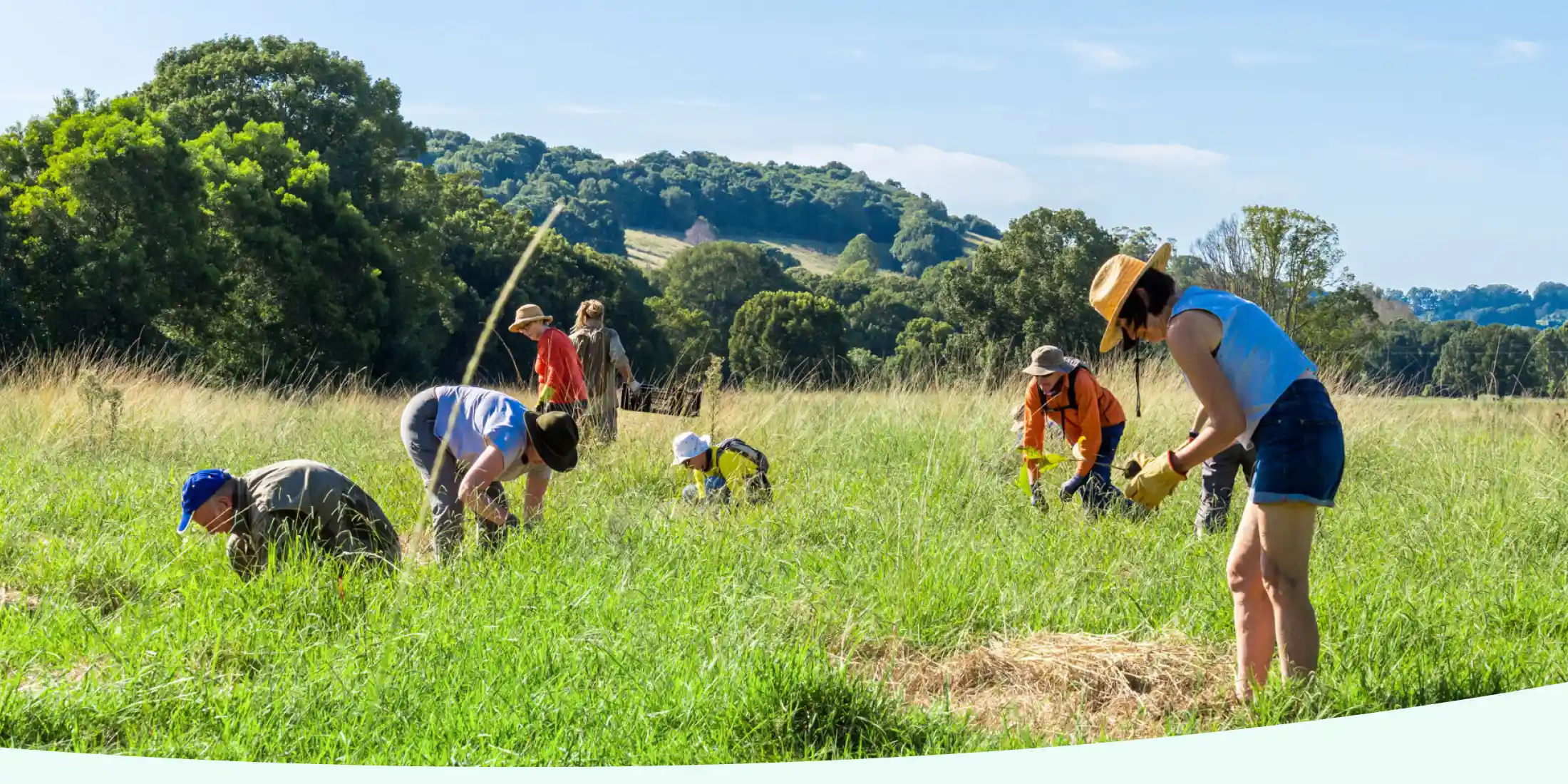

Our tree planting projects
Check out where the felix trees end up, and how they help our planet and people here in Australia and overseas.
July-December 2025
Restoring Peatlands, Indonesia
This project aims to restore swamps and peatlands that were damaged by illegal mining and fires in 2019. The land has been undergoing restoration since 2023 and is once again ready to support life! Trees donated by the felix community will aim to help prevent soil erosion, support other growing plants, and contribute to the future of thriving ecosystems across the wetlands.
January-December 2025
Regenerative Agroforestry on Contour, Guatemala
This project focuses on teaching local communities in the state of Izabal about the benefits of regenerative agroforestry in restoring healthy ecosystems. So far, this project has helped 14,000+ local families learn to harness agroforestry to create multiple income streams from various planted crops.
April-June 2025
Koala Corridor in NSW Northern Rivers, Australia
Trees donated to this project will be strategically planted to help connect separate koala colonies, while enhancing, protecting and conserving the critically endangered Lowland Rainforest of Subtropical Australia. By creating tree “corridors”, we’re helping restore natural habitats for all sorts of other unique Aussie animals, birds and invertebrates while providing jobs for years to come.
April-June 2025
Mornington Peninsula Koala Corridor, Australia
This project aims to enhance plant life and create a green belt around the bay to help koala colonies reach each other safely across the Peninsula. By planting carefully selected native trees, shrubs and grasses, this project will help boost biodiversity, improve carbon absorption, and restore soil health in previously farmed areas.
April-June 2025
Trees for Survival, New Zealand
This project is not only about improving damaged environment but also educating younger generations to take charge. 260+ schools across New Zealand will be provided with 1,000 seedlings each and get hands-on experience with restoration and conservation. From looking after the seedlings to eventually planting them, this project gets students, teachers, and community volunteers involved in reducing soil erosion, safeguarding water quality, restoring habitats, and improving biodiversity across +200 sites.
April-June 2025
Agroforestry and Watershed Restoration Project, Indonesia
This project aims to introduce a more sustainable way of farming into 4 different Indonesian village communities to help increase their land’s water catchment capabilities and reduce pressure on surrounding wildlife. By embracing the local beliefs on the Dayak tribe, this project will also help improve community status and provide a stable source of income for local farmers.
October-December 2024
Trees For Survival, New Zealand
Number of trees planted: 100,000
This project was all about giving a hands-on opportunity for school children from over 200 schools to make a practical difference to their environment while learning about conservation, revegetation, wetland restoration, and creating habitat for native wildlife.
July-September 2024
Monarch Restoration Project, Mexico
Number of trees planted: 584,739
Millions of Monarch butterflies migrate from the US + Canada to Mexico every year in the winter, where they rest in high-altitude tree forests during the colder months. With these forests increasingly under threat, this project focused on restoring both surrounding farmlands and forests to help improve the habitat in an essential migration corridor.
April-June 2024
Koala Corridor Project in NSW Northern Rivers, Australia
Number of trees planted: 55,000
This project was all about protecting iconic Aussie animals, including koalas, and focused on creating wildlife corridors by planting both koala food trees and local rainforest trees to link up habitats across the northern rivers of NSW.
April-June 2024
Amazon Restoration, Peru
Number of trees planted: 216,392
Expanding agricultural activities and increased demand for wood has put huge amounts of pressure on Amazon forests. This project helped restore 520 hectares of degraded land across the in Peruvian Amazon and provided a source of income to 475+ families across 5 communities.
January-March 2024
Natural Disaster Recovery Tree Project, Southeast US
Number of trees planted: 240, 574
This project was all about revitalising land that had been ravaged by natural disasters including hurricanes, wildfires and floods by replanting native plant species for landowners who couldn’t afford to complete reforestation activities on their own.
2023 projects:
October-December 2023 Restoring Endangered Red Panda Habitat, Nepal. Trees planted: 40,000
October-December 2023 One Tree For One Child, Bangladesh. Trees planted: 47,000
October-December 2023 Azuero Ecological Corridor Reforestation, Panama. Trees planted: 130,070
July-September 2023 Agroforestry to Protect Tiger Habitat, India. Trees planted: 34,120
July-September 2023 Nazko Wildlife Restoration, British Columbia. Trees planted: 244,916
April-June 2023 Koala Wildlife Corridor Project in NSW, Australia. Trees planted: 83,000
April-June 2023 Regenerative Agroforestry Project, Guatemala. Trees planted: 11,122
January-March 2023 Agroforestry Cocoa Project, Brazil. Trees planted: 188,977
2022 projects:
October-December 2022 Kalimantan Water Catchment Restoration, Indonesia. Trees planted: 162,465
July-September 2022 Southwest Western Australia, South Australia and Western Australia. Trees planted: 129,357
April-June 2022 Plant Trees for Chimpanzees, Uganda. Trees planted: 117,840
January-March 2022 Fruits For All Project, Bhutan. Trees planted: 62,698
January-March 2022 Reforestation and Landscape Restoration Project, Malawi. Trees planted: 36,484
2021 projects:
October-December 2021 Plant for Punjab, India. Trees planted: 64,267
April-September 2021 Southwest Western Australia. Trees planted: 98,081
January-March 2021 The Andes, South America. Trees planted: 10,031
Donation World Environment Day. Trees planted: 25,000
2020 projects:
December 2020 Philippines. Trees planted: 778
Donation Australian Bushfire Relief. Trees planted: 15,000


